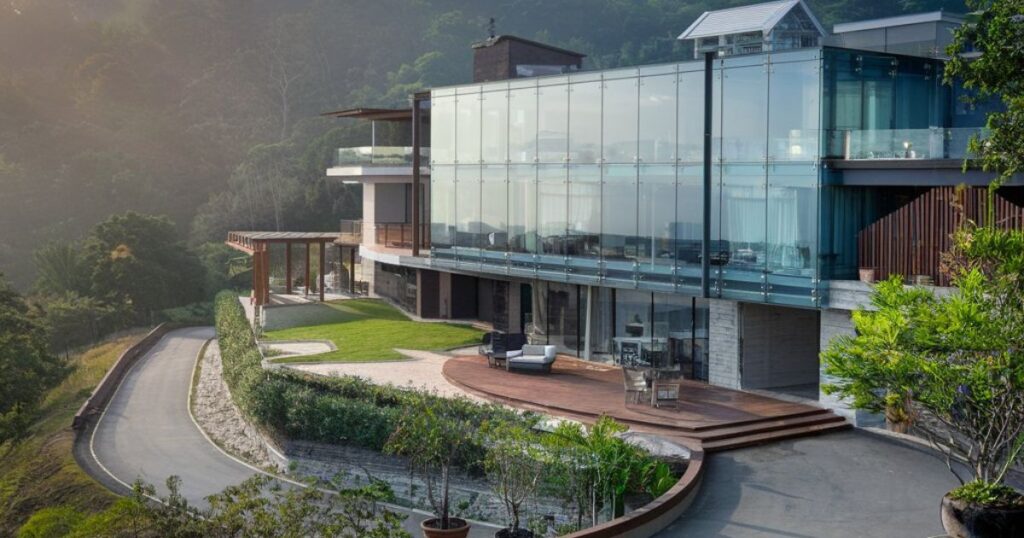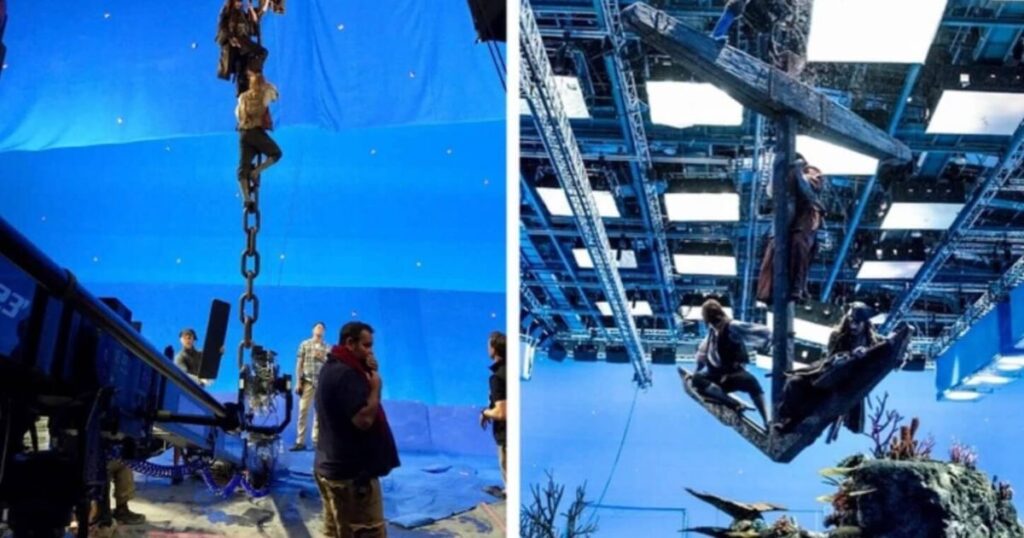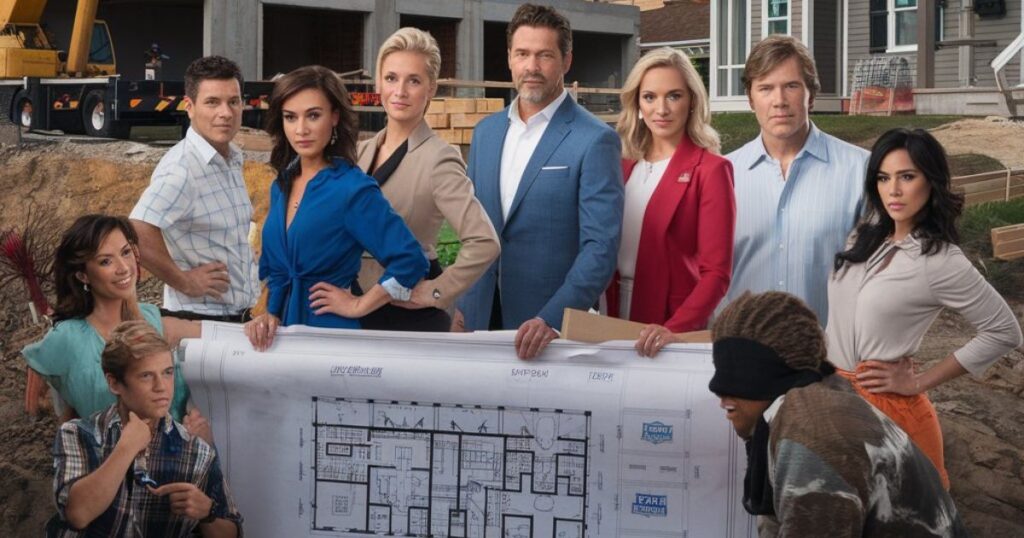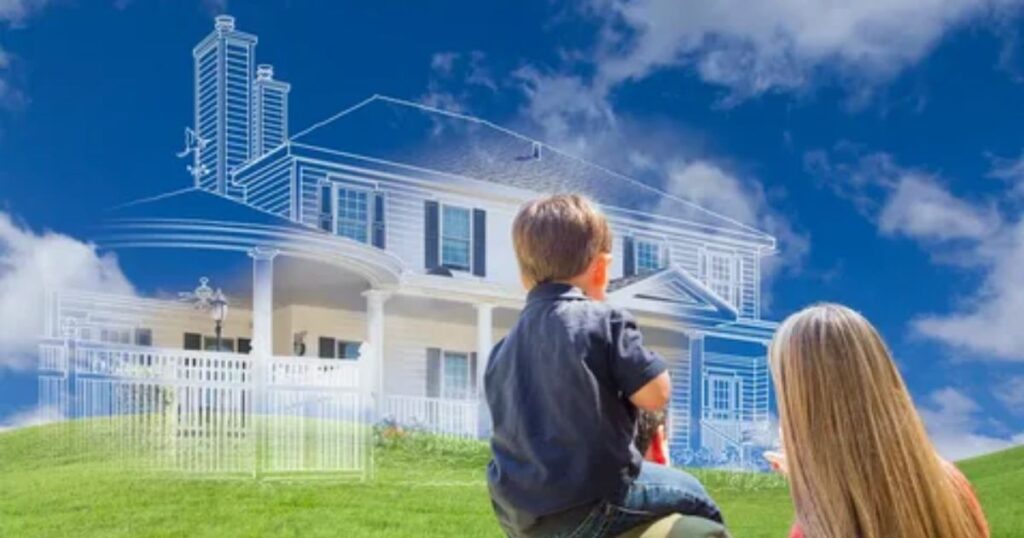In the world of home improvement reality TV, few shows have captured audiences quite like HGTV’s “100 Day Dream Home”.
Launched in 2020, the show follows the dynamic duo of Mika and Brian Kleinschmidt as they race against the clock to build custom homes in just 100 days. But recently, this dream has turned into a nightmare for some homeowners, leading to a controversial lawsuit and raising questions about the reality behind reality TV.
Let’s dive deep into why these 100 Day Dream Homes are being called Nightmare Homes and explore the implications for both the show and the wider home improvement industry.
The Concept Behind 100 Day Dream Homes

HGTV’s “100 Day Dream Home” burst onto screens with a premise that seemed too good to be true: custom-built homes delivered in a mere 100 days. Hosted by the charismatic couple Mika and Brian Kleinschmidt, the show promised to turn homeowners’ visions into reality at breakneck speed.
The concept was simple yet captivating – clients would share their dream home ideas, and then step back as the Kleinschmidts worked their magic, culminating in a dramatic reveal that often left homeowners (and viewers) in tears of joy.
The show’s appeal lies in its perfect blend of aspiration and accessibility. Who wouldn’t want their dream home built in just over three months? The Kleinschmidts’ chemistry and expertise added to the show’s charm, making it a hit for HGTV. However, as we’re about to explore, the reality behind these rapid builds may be less dreamy than portrayed on screen.
What Happens Behind the Scenes

Behind the glossy veneer of “100 Day Dream Home”, a complex production machine works tirelessly to meet the show’s ambitious timelines. While viewers are treated to neatly packaged episodes showcasing seemingly seamless builds, the reality is far more chaotic and compressed.
Here’s a glimpse into the behind-the-scenes process:
- Pre-production planning: Months before filming begins, producers scout locations, vet potential homeowners, and start preliminary designs.
- Accelerated permitting: The show often leverages its influence to fast-track building permits and inspections.
- Round-the-clock construction: To meet the 100-day deadline, work often continues 24/7, with multiple crews working in shifts.
- Staged reveals: The dramatic final reveals are carefully orchestrated, with homeowners kept away from the site until the cameras are rolling.
While this process makes for compelling television, it raises questions about the quality and sustainability of such rapid construction. The pressure to deliver picture-perfect homes in record time can lead to corners being cut and important details overlooked.
See Also : Passing of Chrisley Knows best daughter dies
What Went Down Recently?
The dream of “100 Day Dream Home” has recently turned sour for some homeowners, leading to a wave of complaints and legal action. These issues have earned the show’s creations the unfortunate moniker of “Nightmare Homes”. But what exactly went wrong?
Several homeowners who participated in the show have come forward with allegations of poor construction quality, code violations, and the use of substandard materials. These issues weren’t apparent during the glossy televised reveals but became painfully evident once the cameras stopped rolling and real life began.
The 100 Day Dream Home lawsuit outlines specific complaints that paint a troubling picture:
- Faulty electrical work: Some homeowners reported dangerous wiring issues that posed fire hazards.
- Improperly installed gas lines: A particularly serious allegation given the potential for gas leaks.
- Structural problems: From foundation issues to improperly secured roofing, some homes reportedly had fundamental flaws.
- Cosmetic shortcuts: While less dangerous, many homeowners complained about rushed finishes, cheap materials, and shoddy workmanship in the home’s aesthetic elements.
These issues have not only caused stress and financial strain for the affected homeowners but have also shaken public trust in the show and its hosts. The lawsuit seeks compensation for repairs, emotional distress, and the difference between the promised “dream home” and the reality delivered.
A Common Theme in Reality TV

Unfortunately, the troubles facing “100 Day Dream Home” aren’t unique in the world of home improvement reality TV. Other popular shows have faced similar controversies. For instance, the “Property Brothers” faced a lawsuit in 2019 over allegations of poor renovation work.
This pattern points to a broader issue within the industry: the challenge of balancing entertainment value with responsible construction practices. The pressure to deliver dramatic transformations within tight TV production schedules can lead to:
- Rushed decision-making
- Overworked contractors
- Shortcuts in quality control
- Prioritization of aesthetics over functionality
As media coverage of these cases increases, viewers are becoming more skeptical of the quick and dramatic transformations they see on screen. This growing awareness is forcing networks and production companies to reconsider their approach to home improvement shows.
The Bigger Picture: Reality TV vs. Real-Life Home Building

The controversy surrounding “100 Day Dream Home” highlights the stark contrast between reality TV and real-life home building. While the show presents an idealized version of custom home construction, the reality is far more complex and time-consuming.
Here’s a comparison of typical timelines:
| Stage | 100 Day Dream Home | Typical Custom Build |
| Design | 1-2 weeks | 2-6 months |
| Permitting | 1-2 weeks | 1-3 months |
| Site Prep | 1 week | 2-4 weeks |
| Construction | 10-12 weeks | 6-12 months |
| Finishing | 1-2 weeks | 1-3 months |
| Total | 100 days | 9-18 months |
This compressed timeline on “100 Day Dream Home” can lead to:
- Rushed decision-making
- Limited time for proper planning and problem-solving
- Increased risk of errors and oversights
- Potential compromise on quality and safety standards
Real-life custom home building requires careful planning, attention to detail, and time for proper execution. Rushing this process, as seen in the show, can lead to the kinds of problems now being reported by homeowners.
Lessons for Homeowners and Viewers
The controversy surrounding “100 Day Dream Home” offers valuable lessons for both potential homeowners and viewers of home improvement shows:
- Do your due diligence: When hiring contractors, thoroughly check references and credentials. Don’t be swayed by TV fame alone.
- Understand realistic timelines: Quality custom homes typically take months, not days, to build properly.
- Be wary of too-good-to-be-true promises: If a deal seems unbelievably good, it probably is.
- Prioritize quality over speed: A well-built home that takes longer is better than a quickly built home with problems.
- Get everything in writing: Ensure all promises and specifications are clearly documented in contracts.
Remember, what you see on TV is often heavily edited and may not reflect the full reality of home construction.
The Future of 100 Day Dream Home and Similar Shows

The lawsuit and resulting controversy have cast a shadow over the future of “100 Day Dream Home”. While HGTV hasn’t officially cancelled the show as of this writing, its reputation has certainly taken a hit. This situation may lead to significant changes in how the show operates, if it continues at all.
Looking at the broader industry, this controversy could spark a shift in how home improvement reality shows are produced. Possible changes might include:
- Longer, more realistic construction timelines
- Greater transparency about the construction process
- More emphasis on quality and safety over speed and drama
- Increased oversight and quality control measures
These changes could lead to shows that, while perhaps less dramatically satisfying, provide a more accurate representation of the home building process.
See Also: Passages Malibu Logo
FAQ’s
Is 100 Day Dream House fake?
While “100 Day Dream Home” isn’t entirely “fake”, it does involve elements of reality TV production that can distort the true nature of home building.
The basic premise – building custom homes quickly – is reb but the process is heavily compressed and edited for television. Many behind-the-scenes details, challenges, and potential issues are not shown on camera.
Do the people on 100 Day Dream Home keep the furniture?
Unlike some HGTV shows where furnishings are included, homeowners on “100 Day Dream Home” typically don’t keep the furniture seen in the final reveal.
These items are often staged for filming and removed after the shoot. Homeowners are generally responsible for furnishing their new homes themselves.
Can you sell the HGTV Dream Home after winning?
It’s important to note that “100 Day Dream Home” is different from HGTV’s Dream Home Giveaway. In the annual giveaway, winners can indeed sell the home they win.
However, for “100 Day Dream Home” participants, they own the home they paid to have built and can sell it if they choose, subject to any contractual agreements they may have with the show.
Conclusion
The controversy surrounding “100 Day Dream Home” serves as a cautionary tale about the potential pitfalls of prioritizing speed and spectacle over quality and safety in home construction. While the show’s premise is undeniably appealing, the reality behind these rapid builds has proven to be far more complicated and, in some cases, problematic.
As viewers, we’re reminded to approach reality TV with a critical eye, understanding that what we see on screen may not always reflect the full picture. For potential homeowners, this situation underscores the importance of due diligence, realistic expectations, and prioritizing quality over speed when it comes to building or renovating a home.
The future of “100 Day Dream Home” and similar shows remains uncertain, but one thing is clear: the home improvement reality TV landscape is due for a renovation of its own. As the industry grapples with these challenges, we may see a shift towards more transparent, responsible, and realistic portrayals of the home building process. In the end, that could be a dream come true for both viewers and homeowners alike.

Hello, I’m Henry, a committed writer at supersbusiness.com, where I specialize in Business, Finance, Real Estate, and News. My articles explore a wide range of topics, providing readers with insightful and engaging content. With a knack for simplifying complex ideas, I aim to make my writing accessible and informative for all. Stay informed on the latest trends and insights by following me on supersbusiness.com.

